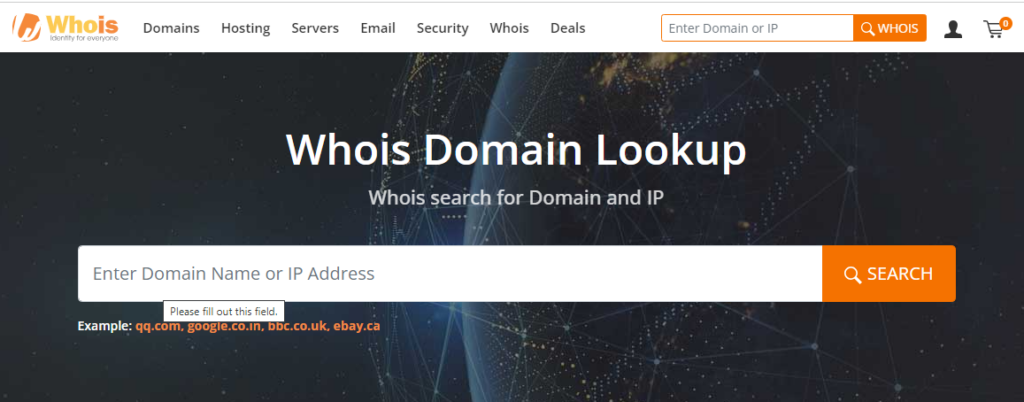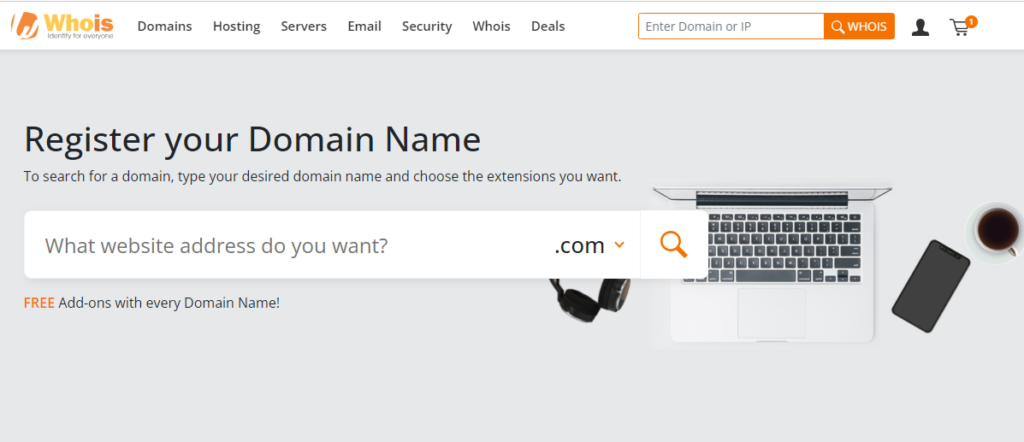Whois.com is a popular domain name lookup and registration tool. It provides information about domain name registration details, including the registrant’s contact info, name servers, and domain availability. Whois can be useful for online research, checking domain ownership, evaluating SEO competitor websites, enforcing trademarks, and more.
Looking Up Domain Registration Details

The primary function of Whois.com is allowing users to look up domain name registration details.
When you perform a Whois search on a domain, you typically get the following information:
- Registrant Contact Info – Name, physical address, phone number and email address of the domain owner.
- Registrar – The domain name registrar through which the domain was registered.
- Name Servers – The DNS servers hosting the domain’s zone file/DNS records.
- Creation Date – Date the domain was originally registered.
- Expiration Date – Date the domain registration will expire.
This information can be useful for:
- Contacting the domain owner – The Registrant Info provides details to directly contact the owner.
- Researching domain history – Creation and expiration dates allow you to research a domain’s full registration history.
- Troubleshooting DNS issues – Name servers help diagnose DNS configuration issues.
Overall, Whois domain lookups provide transparency into vital domain registration details that can further online research and investigations.
Checking Domain Availability

In addition to looking up existing domain details, Whois.com also allows you to check domain availability.
When you search for an unregistered domain, it will advise whether that domain is:
- Available for registration
- Unavailable (already registered)
Specifically, for an available domain it will state:
Available
This Domain name has not been registered
And for an unavailable domain:
Unavailable
This Domain name has been registered
Benefits of checking domain availability on Whois.com include:
- Real-time accuracy – Whois.com queries domain registry databases in real-time for latest availability status.
- Bulk searches – Whois.com allows you to perform bulk .com domain searches to check availability of multiple names at once.
- Alternative TLDs – If your ideal .com domain is taken, you can easily try alternate TLDs like .net .org .info etc.
- Domain suggestions – If original domain is unavailable, Whois will suggest similar available domain alternatives.
Overall, Whois.com provides a quick, efficient and accurate way to check if your desired domain name is already registered or still available for registration.
Evaluating SEO Competitor Websites
Another key use of Whois.com is researching and evaluating SEO competitor websites. By looking up competitor domains, SEO analysts can leverage Whois data to gain useful competitor intelligence, such as:
- Find site owner info – Identify individuals behind a site, which can then be useful for outreach and linking.
- Identify technology stack – Name servers can indicate site technology like WordPress, Shopify, Magento etc.
- Research link building – Backlink and domain analysis of registrant details can uncover competitor link building/acquisition strategies.
- Estimate site value – Creation date helps estimate the relative value/authority of aged domains vs newer sites.
For example, by identifying the BrandName.com site runs Magento on Cloudways hosting through Whois lookups, you can better understand their tech stack to benchmark against.
Evaluating competitor websites enables informed SEO decisions based on the strategies of established industry sites. Whois lookups provide data to fuel this competitive analysis.
Enforcing Trademarks
Whois domain searches also facilitate trademark enforcement online. Businesses can leverage Whois to identify cybersquatters violating their trademarks through the registration of domains incorporating protected brands/names.
When an infringing domain utilizing a trademarked brand/name is found registered, rights holders can enforce their trademarks by:
- Contacting the registrant – Use Whois registrant info to contact the cybersquatter to request they voluntarily transfer/cancel the domain registration.
- Reporting abuse – Domain registrars provide abuse forms to report trademark infringing registrations for further investigation/enforcement.
- Filing UDRP complaint – For uncooperative cybersquatters, trademark holders can file a UDRP proceeding to have the domain forcibly transferred to them.
For instance, if a company found that brand-name.com was registered by an unaffiliated third party, they could leverage Whois data to contact the registrant and enforce their trademark rights.
Whois lookups enable brand owners to monitor registrations for their trademarks, identifying rogue domains for swift enforcement action.
Tracking Domain Expiry Dates
In addition to exploring current domain details, Whois data also provides visibility into future domain expiration dates. All domain names are registered for a finite period, ranging from 1-10 years depending on the TLD.
When a domain expires, it enters a period of uncertainty and instability:
- The site may go offline if the registrant doesn’t renew in time.
- Expired domains may get snapped up by another registrant.
- Traffic levels can fluctuate during this turbulent transition.
By tracking the expiration dates of important domains via Whois, you can prepare for potential changes when domains lapse:
- Monitor site traffic – Watch for traffic shifts if the domain expires/is re-registered.
- Consider acquisition – Evaluate acquiring the expired domain if it matches your brand.
- Combat domain tasting – If a competitor domain expires, register it defensively to prevent tasting abuse.
For example, if you operated SiteA.com and identified via Whois that your main competitor SiteB.com was expiring next month, you could weigh trying to acquire this domain to inherit its authority and traffic. Tracking key expiration dates in Whois allows strategic preparation.
Protect Your Own Domains
While Whois provides insight into other domains, it also clearly publishes all your registration details when you register a domain yourself.
To better protect your personal information and reduce unsolicited communication, consider using a proxy/privacy service offered by most registrars to mask your details.
Instead of exposing your actual information publicly in the Whois record, privacy services replace it with their own generic contacts while still forwarding any necessary communication. This allows domain ownership anonymity while still maintaining correspondence channels.
Consider enabling privacy services on any domains you register to better secure your personal/company details from unnecessary exposure in the public Whois database.
Key Takeaways
- Whois.com provides a free domain name lookup tool to research websites, track registration details and check availability.
- Users can research domains to identify site owners, analyze SEO competitors, enforce trademarks, monitor expirations, and more.
- Checking domain availability confirms if desired names are still available for registration in real-time.
- Whois records also publish your own contact information when registering domains, but privacy services can protect those details.
- Overall Whois.com delivers vital domain research capabilities to make informed decisions and unlock useful intelligence about websites.
Read also:
